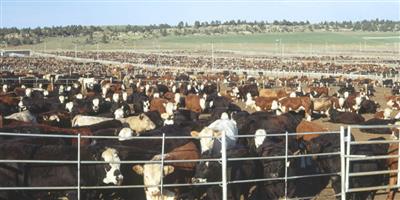Net farm income has declined nearly 50 percent since the peak in 2013 and the ratio of income to assets is approaching the low levels experienced in the 1980s. The value of farm assets, comprised mostly of real estate, has not declined despite the drops in income, and the debt-to asset ratio remains strong. That may begin to change as debt-to-income levels are increasing while declining cash flow pushes rental rates and land values lower. Rising interest rates and potential tax reform changes could also play a role.
Wheat
Fears over a steep drop in spring wheat production sent wheat values soaring this summer, only for the prices to plummet on the realization that Russia will produce another record crop this year. Thanks to ongoing drought conditions across North Dakota and surrounding states and a significant drop in planted acreage, spring wheat production will likely fall to its lowest level in 15 years. The premium of hard red spring (HRS) in Minneapolis to hard red winter wheat (HRW) in Kansas City rallied to its highest level since 2008 on mounting fears of a shortfall of quality milling wheat. Sharply lower U.S. wheat production sent futures prices rallying to two and three-year highs.
Fall planting of the U.S. winter wheat crop is now underway in the U.S. with planted acreage expected to be down another five percent on the Plains again this year as farmers struggle to profitably grow wheat. Cash wheat prices across much of the Plains have remained at a discount to corn prices and have discouraged farmers from expanding wheat acreage. However, cash basis has been strengthening and planting conditions are ideal across much of the Central and Southern Plains. Those two factors could limit acreage reductions. In the Pacific Northwest, recent rain has improved planting conditions in the hard red winter regions of Montana and the soft white winter regions of eastern Washington, further raising prospects for winter wheat acreage.
Crop prices are projected to be near 2016/17 levels, but could rise if harvests outside the U.S. disappoint. Producers will be aggressively seeking options to reduce costs and/ or exploit marketing opportunities. Above average yields in 2016 provided producers with additional bushels to offset price declines. But that will not be the case for most producers in 2017/18.
Cattle
The U.S. beef cattle herd remains in expansion mode, which will result in steady increases in beef output through 2019. USDA estimates the 2017 calf crop at 36.3 million head, 2.9 percent above last year and 8.3 percent higher than the cyclical low calf crop in 2014. Larger domestic beef production for the remainder of 2017 and throughout 2018 will likely pressure prices.
Robust demand and excellent packer profitability has led to aggressive marketings throughout 2017. Feedyard inventory currentness has dramatically improved compared to the last two years. Beef production is on pace to increase 4 percent in 2017, and is forecast to jump another 3-5 percent in 2018. Cattle feeders experienced record profitability in the first half of 2017, with cash-to-cash closeouts reaching over $500 per head profit. However, fall live cattle cash prices are under pressure and crush margins are negative on placements for cattle slated to be marketed in early 2018. Strong demand for yearling cattle to be placed in fall 2017 has supported feeder cattle prices.
The magnitude and duration of the current expansion phase will be determined by cow-calf profitability and pasture/range conditions. Drought conditions in the Northern Plains have slightly shifted the nation’s cow herd and also accelerated the pace of placements in northern states. However, the majority of the nation’s beef cows remain geographically located in areas with excellent pasture and range conditions. The industry expects continued demand growth and steady production growth, suggesting that the major price adjustments are behind us. As a result, spreads for margin operators have returned to historical relationships, typical seasonality has returned to the market, and hedgeable profit opportunities are available.
The financial health of the U.S. consumer has supported product values, and in turn, retailer margins. Roughly 87 percent of all beef produced in the U.S. is consumed domestically, but exports are chipping away at that figure. Beef exports have increased YTD by 14.5 percent and are on pace to increase 8 percent annually. The momentum will likely carry through 2018, with another 5-7 percent increase anticipated for next year. Growth in key export destinations has been mixed of late, but Asia continues to be the bright spot for U.S. beef export growth. Sales to Japan, South Korea, and Hong Kong are up substantially. The Chinese market is now open to the U.S., but will be slow to develop. Uncertainty surrounding future trade policies with other key markets will persist well into 2018.
To read the full Rural Economic Review Click Here
Source: CoBank
Photo: NAN




